Small Batch Yarn Prep
Words and Photos by Margaret Wright
Three years ago, I went from a Jersey Shore schoolteacher and suburban mom to living in the woods of Western Maine. I purchased my first spinning wheel and joined an amazing group of people in a spinning group out of Cornish, Maine. They insist they love me despite the way I say coffee and dog, and they totally took pity on my lack of fiber knowledge, taking me under their wings. They truly are my fiber angels. It was from them I learned how to prepare small batches of fiber.
After buying a few really dirty and stinky fleeces, I decided I really hated the whole process of cleaning the poop parts off the fleece, known as skirting. So I now purchase my fleeces at fiber festivals or at reputable fairs as they are usually skirted and much better quality. Although the fleece still has some poop, there’s a whole lot less of it. At the Fryeburg Fair in Fryeburg, Maine, I purchased a very nice Romney fleece. I prepared the fleece in small batches for spinning.
Supplies
I recommend using a double sink, but you can improvise and use a single sink. You’ll also need Dawn blue dish soap, really hot water, a salad spinner, and some sort of rack to dry your fiber on. I have used a dog crate, a fireplace screen, and lawn chairs! Improvise is my middle name. I also wear gloves as I like really hot water, and, oh yeah, I hate poop.
Process
I squeeze 3 to 4 circles of Dawn into my clean sink after making sure the stopper is in. You do not want too much soap or it will be too sudsy. I then fill the sink about 3/4 full of the hottest water I can get from my tap.
I gently pull a chunk of fiber off the fleece, making sure to remove any straw or poop. Then I gently submerge my fiber into the hot water. Be careful not to agitate it or it will turn into felt like you buy in the craft store.
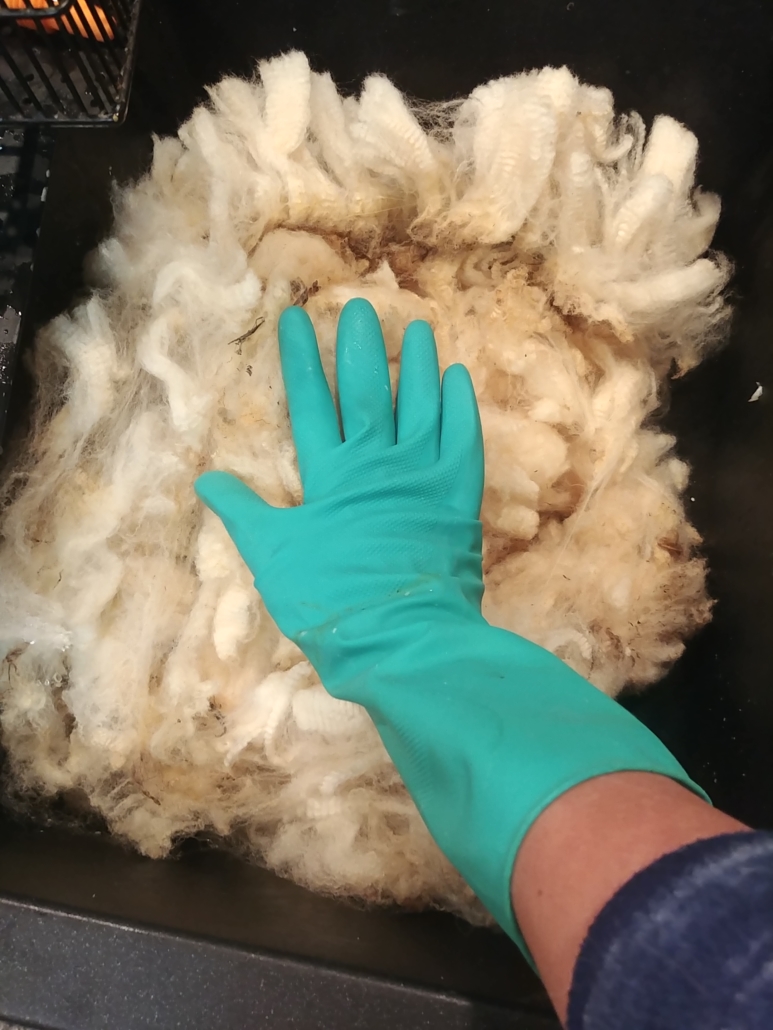
I set my timer for 30 minutes. Then I go do whatever. Pet the dog, have a coffee, whatever. After 30 minutes, the water will be dark and nasty looking due to the combination of dirt and lanolin that occurs naturally on wool. I unplug the drain and gently press the water from the fiber. I like to press it against the side of the sink. I know I say gently often, but it really is important to be gentle.
At the same time, I have the second sink filling with clean, very warm water, but not as hot as the first sink was originally. I submerge the fleece gently into the clean water and allow this to sit for 30 minutes also. If you don’t have 2 sinks, put your wet fiber in a bowl or pot while you refill the sink with clean water.
Note: I like my fleece a little greasy, meaning I like to spin it with more of the natural lanolin in it. My friend washes it twice, repeating the first wash, as she likes her fleece really clean. Try both and see what you like best.
I drain the rinse sink, gently press the water from the fiber, and divide the fiber into smaller batches that can fit in the salad spinner. I place the wet fiber into the salad spinner and spin it twice, one time in one direction and the second time in the other direction, dumping the water out in between spins.
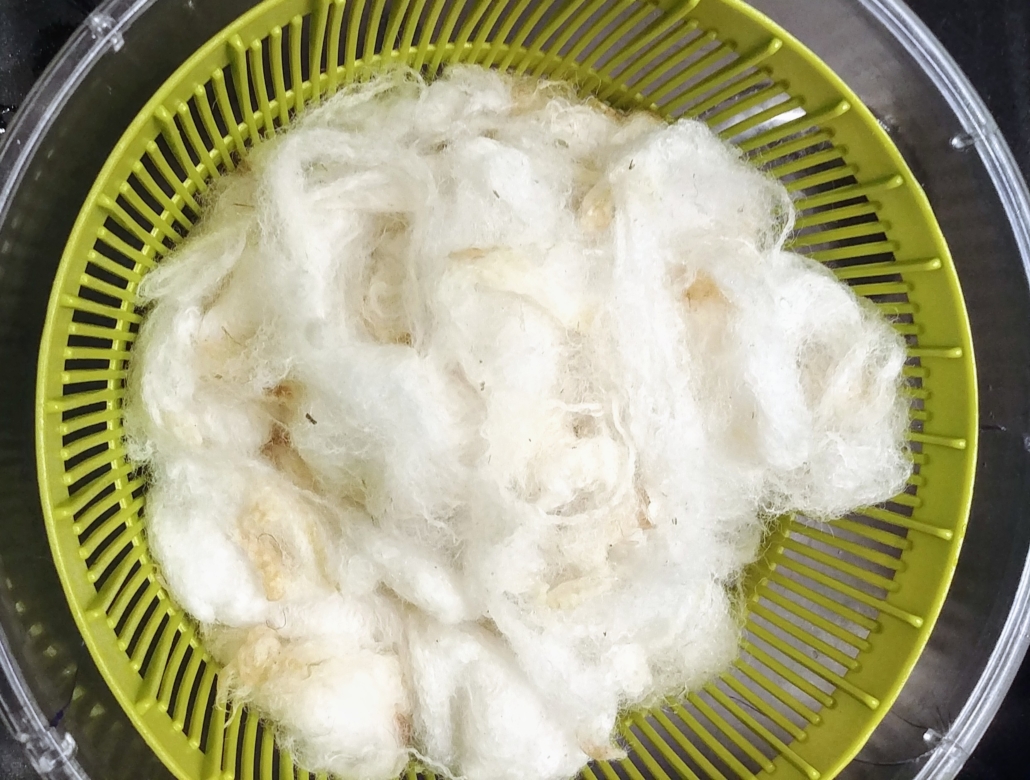
Prep for Spinning
Once your fiber is dry, you can prep it for spinning a variety of ways. As you gain more experience and become more comfortable, you may want to try different methods to prep your fiber.
For spinning prep, the easiest way for a newbie like I was just 3 short years ago is to do what is called flicking. I love to sit in the evenings and flick the ends of my fiber locks open using a dog comb. To do this, I firmly hold one end of 1–3 locks, depending on thickness, and gently pull the dog comb over the ends until the tips are nice and fluffy. I then turn the fiber around and repeat the process.
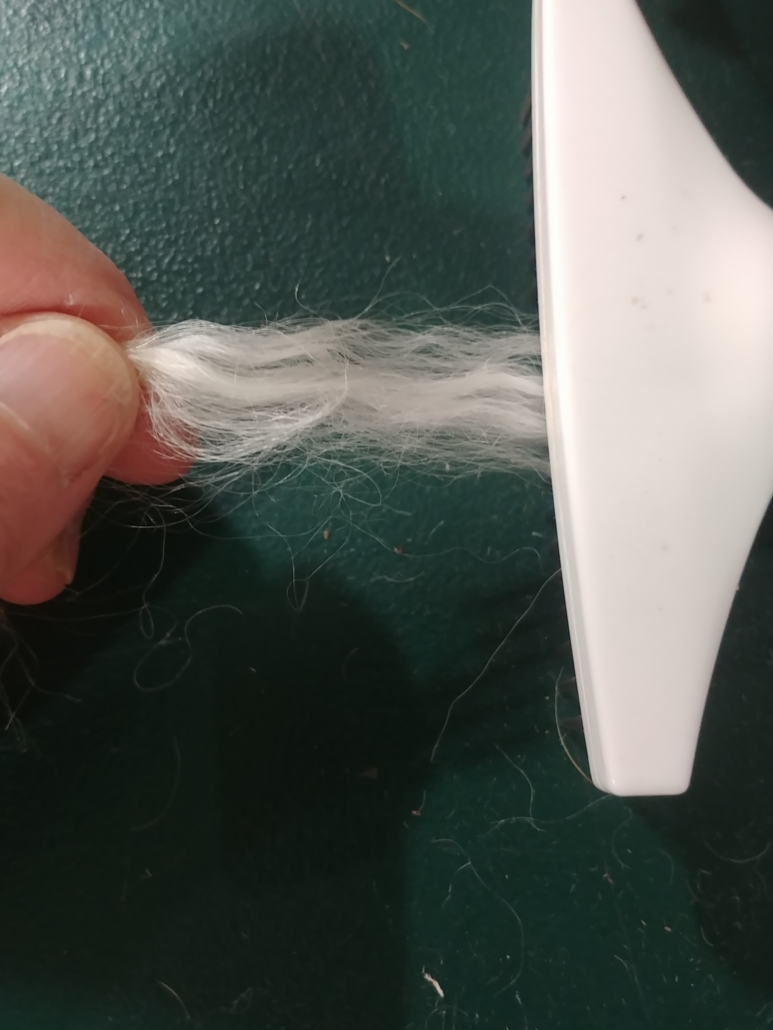
You can also use a hand carder or a dog brush to open up the fiber ends. I find this very relaxing in the evening when my husband is mesmerized by his Bigfoot shows and I listen to an audiobook. When we go places, I frequently take fiber with me. I combed enough fiber one night watching our son play lacrosse to spin 75 yards. Plus, it’s a great icebreaker as people will come up to investigate and you end up meeting some great people.
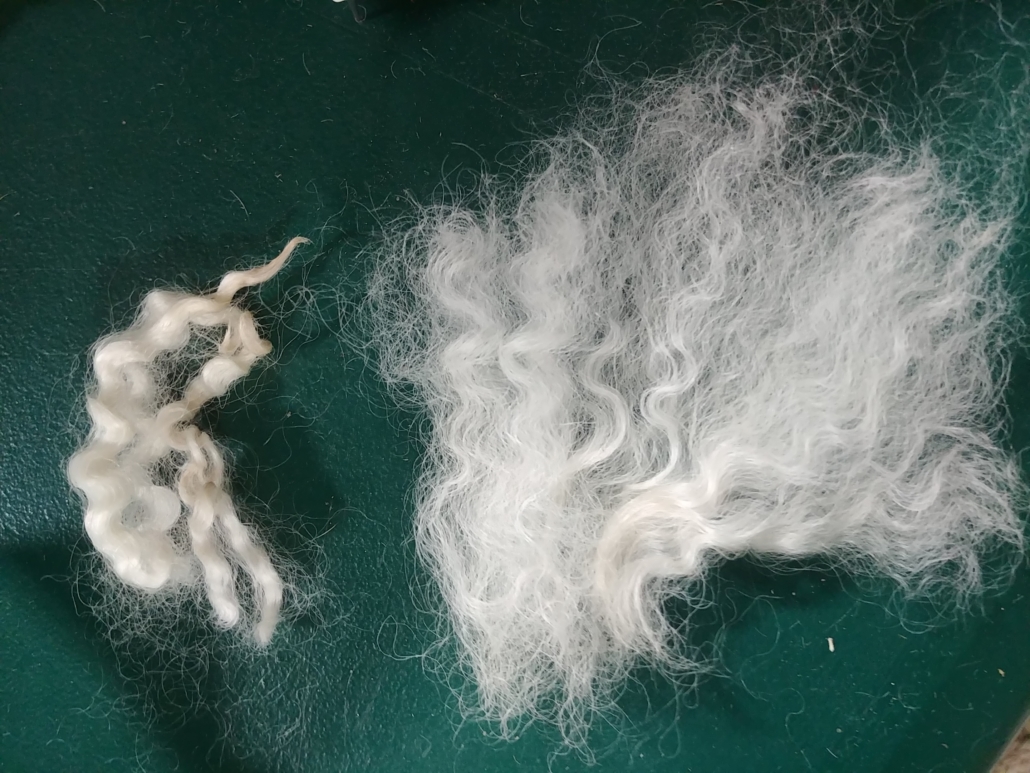
Margi Wright lives in Maine where she sells baked goods and fiber products at a local farmers market, a switch from her former Jersey Shore life as a teacher. Margi enjoys an active lifestyle completing triathlons, cross country skiing, and traveling with her husband to see her children and grandchildren.

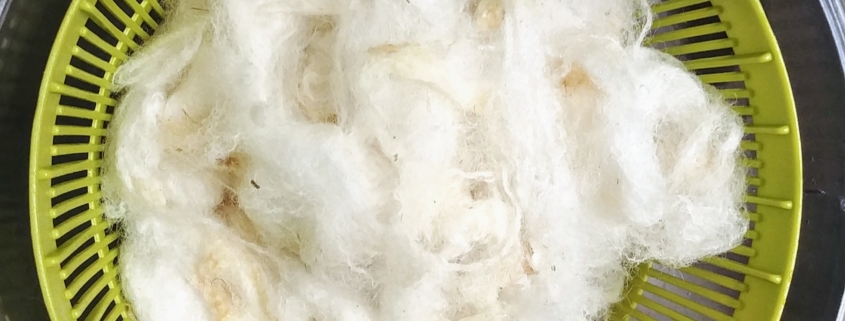


Leave a Reply
Want to join the discussion?Feel free to contribute!